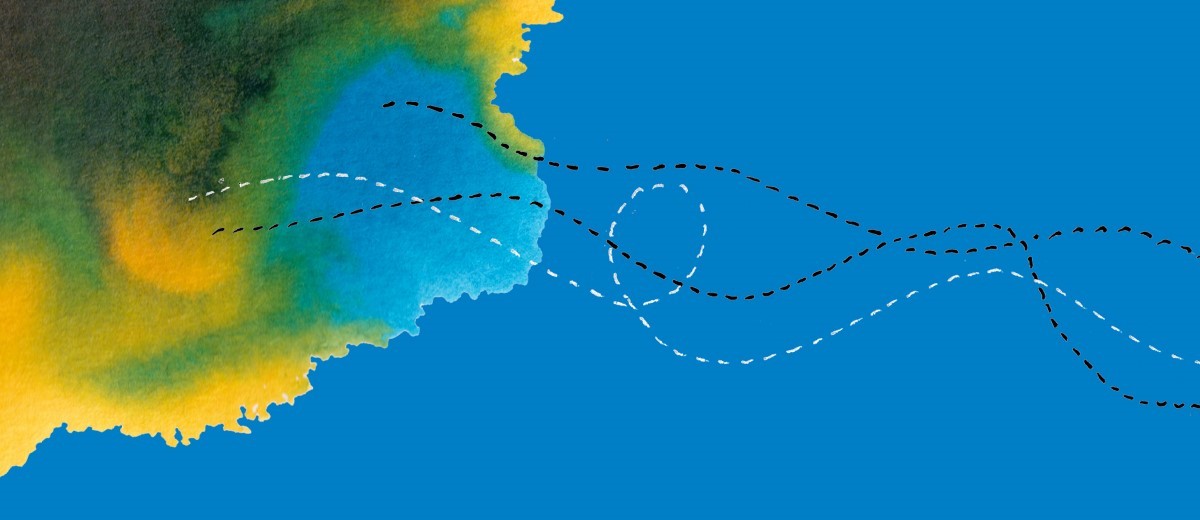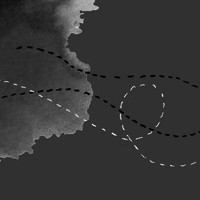Geographic Origins
The Republic of Austria is a landlocked country in central Europe. It is bordered by the Czech Republic, Germany, Liechtenstein, Switzerland, Italy, Slovenia, Hungary and Slovakia. The country is shaped by the Danube Valley and the Alpine region, administratively divided into nine federal provinces with their own government representatives (Lower Austria, Upper Austria, Salzburg, Tirol, Voralberg, East Tirol, Styria, Carinthia and Burgenland).
History of Immigration and Settlement
A feature of South Australia’s geography was named in honour of one of the first two Austrians to set foot on Australian soil. In 1802 Captain Matthew Flinders named Cape Bauer near Streaky Bay after Ferdinand Lucas Bauer, one of the world’s greatest naturalist painters. Bauer recorded Australia’s flora and fauna on Flinders’ epic voyage around Australia.
The first Austrians to arrive in South Australia were two Jesuit priests, Fathers Aloysius Kranewitter and Maximilian Klinkowstroem. They landed at Port Adelaide on board the Alfred on 8 December, 1848. They accompanied Franz Weikert, a Silesian farmer, who wanted to establish a Catholic settlement in South Australia. Weikert’s plan collapsed, and he took his family to Clare to join the Irish Catholics who had settled in the district. Father Kranewitter also travelled to Clare and assisted the parish priest, a young Irishman, with his work. Father Klinkowstroem remained in Adelaide. He returned to London on medical advice within a year of his arrival in South Australia.
In 1851 Father Kranewitter was joined by two Jesuit brothers. They acquired land and built a mud and slab hut to live in. They planted grapevines so that they could have wine for Holy Communion. Work began on establishing a mission centre for the Society of Jesus. The Jesuits called their new settlement Sevenhill, after the city of Rome, the City of the Seven Hills. In 1852 Father Kranewitter was responsible for the religious guidance of all Catholics from the Barossa Valley to the most northern part of the state. In the following year Father Tappeiner arrived from Austria and assisted him.
By 1856 wine making had commenced at Sevenhill. In the 1860s the Jesuits established St Aloysius’ College, a large three-storey building which accommodated 40 students. The College served as a secondary school for boys and a training ground for priests. From 1864 to 1875 the Jesuits of Sevenhill built St Aloysius’ Church. After Catholic colleges opened in Melbourne and Adelaide during the 1870s, Sevenhill College was no longer needed. It closed down in 1886 and became a residence for the Jesuits, who continued to tend the vineyard. Today you can still visit the Sevenhill settlement and winery.
Most of the present Austrian community came to Australia either after Hitler’s annexation of Austria in 1938 or after the Second World War. In 1947 there were 126 Austrian South Australians. Pastor Alfred Freund-Zinnbauer, a Lutheran pastor of Jewish background, and his wife worked in Adelaide to help Austrian refugees and post-war migrants. Pastor Freund-Zinnbauer was later knighted in recognition of his tireless work.
After the Second World War, the provisional Austrian government and the Australian government agreed to assist Austrian migrants to come to Australia. The first Austrians arrived under this scheme in 1952. Skilled workers were actively recruited. These migrants were contracted to work for two years in jobs specified by the Australian government. Many were employed in the building industry, while others worked as fruit pickers, labourers or in domestic work. By 1961 there were 2,454 Austrian-born South Australians.
Cultural Traditions
Ninety-five per cent of native Austrians are of Germanic origin. This trend is also reflected in their national costume. Traditional ones are still worn in rural areas of Tirol. Typical dress for men is shorts with wide braces and jackets without collars or lapels, while the best known dress for women is the Dirndl: pleated skirt, apron, white pleated corsage with full sleeves.
Community Activities
The majority of Austrians belong to the Roman Catholic faith. Many Austrian South Australians continue to observe religious festivals according to Austrian traditions. In Holy Week some Austrian South Australians boil and decorate eggs. These are hidden in the family garden on the morning of Easter Sunday. After Mass the eggs are ‘discovered’ in the garden, and the family then performs an egg-cracking ritual at breakfast. One person holds up their egg, while another tries to crack it with theirs. The person with the toughest egg wins. The broken eggshell represents new life, as when a chicken is hatched, thus symbolising Christ’s resurrection.
On each Sunday during Advent many Austrian South Australians light a candle on a Christmas wreath. The lit candles symbolise the light and truth that Jesus brought to the world. In the northern hemisphere it is winter during Advent and the days are short and dark. After the candle has been lit, the gathering say prayers and sing carols.
Many Austrian South Australians celebrate Christmas on Christmas Eve. According to their lore the Christkind, the newborn Christ, brings presents. They light candles on the Christmas tree and sing carols before unwrapping gifts. Families share a festive meal and give thanks to God.
The Austrian Association of South Australia was formed in 1957 to give Austrians living in Adelaide and South Australia a feeling of togetherness with the view to promoting Austrian culture and establishing a national dance group. In 1970 it purchased its current premises, an old two-roomed school, on Torrens Road, Ovingham. With the help of members this building has undergone extensive renovations, including the addition of a traditional Austrian cellar and a large pergola area which is used for various functions during the summer months.
The Austrian Association’s cellar is open every Friday and is a place where members and visitors can enjoy traditional food, sample some Austrian beer and socialise in a cosy cellar atmosphere. Often an accordion player can be heard and traditional songs are sung. Saturday nights are dance nights and these evenings are often devoted to a regional theme. For instance, on Tirolean evenings members enjoy food and music typical of that province.
The Austrian Association’s year is marked by a number of celebrations such as Austrian National Day and the Annual Austrian Association Ball. Austrian National Day is 26 October, for it was on this day in 1955 that Austria regained its independence. The association marks this event on the nearest Sunday to that date. Day long festivities include a barbecue, performances by the choir and dance groups, and a dinner-dance. In early December Krampus Rummel is celebrated. On this night Saint Nicholas pays the association a visit. He is accompanied by a devil who informs those present that they have been wicked throughout the year and will not receive any presents. Ignoring his abominable companion, Saint Nicholas distributes gifts to all who are present and advises them to be good in the coming year.
An Austrian Soccer Club was established in the late 1950s. Initially the club played in the second division of the South Australian Soccer Association, now called the South Australian Soccer Federation. Over the years it became an important focus of Austrian cultural identity. The club has now disbanded.
For the last 25 to 30 years the association has fielded a ten-pin bowling team at Woodville Bowls. The team meets to bowl every Friday night.
The Austrian Association has several subgroups, namely a senior’s group, mixed choir, and table tennis group. The dance group has now disbanded although some members of the group still get together once a year to give a display.
The association also produces a quarterly newsletter.
Organisations and Media
- The Austrian Association of South Australia newsletter
- German-speaking Association of Whyalla Inc.
- German-speaking Welfare Society of S.A. Inc.
- School for the German Language
- Die Woche in Australien, newspaper
- Neue Australische Post, newspaper
- 5EBI-FM Radio Programs
Statistics
The 1986 census recorded 2,131 Austraian-born South Australians, while 3,006 people said that they were of Austrian descent.
According to the 1991 census there were 2,017 Austrian-born South Australians. 3,612 people said that their mothers were born in Austria, and 3,692 that their fathers were.
The 1996 census recorded 1,897 Austrian-born South Australians, with a further 2,370 identifying themselves as second generation Austrians.
The 2001 census recorded 1,739 Austrian-born South Australians, while 3,296 people said they were of Austrian descent.
The 2006 census recorded 1,637 Austrian-born South Australians, while 3,445 people said that they were of Austrian descent.
The 2011 census recorded 1,517 Austrian-born South Australians, while 3,393 people said that they were of Austrian descent.
The 2016 census recorded 1,357 Austrian-born South Australians, while 3,442 people said that they were of Austrian descent.
Burke, AF, The Story of St. Aloysius’ Church Sevenhill (Murray Bridge: Bridge Print, 1982)
Jupp, J (ed), The Australian People: An Encyclopedia of the Nation, Its People and Their Origins, Second Edition, (Cambridge University Press, 2001)
Norst, MJ and McBride, JM, Austrians and Australia (Potts Point: Athena Press, 1988)
Norst, MJ, Ferdinand Bauer: Australian Natural History Drawings (Melbourne: Lothian Press, 1989)
Noye, R, Clare: A District History (Adelaide: Investigator Press, 1980)
Press, M, From Our Broken Toil: South Australian Catholics 1836–1906 (Archdiocese of Adelaide, 1986)




Add your comment